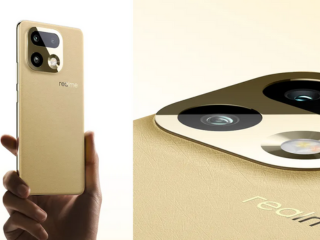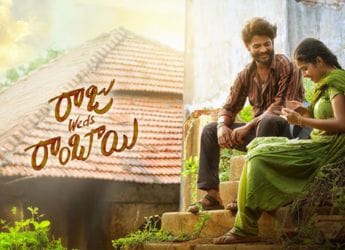- Home
- Cameras
- Cameras Features
- Point and Shoot cameras: A buyer's guide
Point-and-Shoot cameras: A buyer's guide

The camera is an important tool, not only to preserve memories, but also create an artistic expression on those looking. Therefore, it is imperative to make the right decision while choosing the camera and look beyond just the megapixels on the sensor (Read our earlier story: Debunking the Megapixel Myth). Things like ergonomics, zoom factor, focusing methods make a lot of difference in what the final image will look like.
With that out of the way we can move on to helping you choose the best camera. In this article we'll restrict ourselves to compact cameras or point-and-shoots as they are commonly called and we'll look at DSLRs in a later piece. We realize it's unfair to compare a Rs. 5,000 camera to a Rs. 25,000 camera, and since most people have a fixed budget in mind in any case, we decided to further break down the point-and-shoots into three categories.
Entry-Level (sub Rs. 10,000)
The entry level point-and-shoot category is based on a price limit of Rs. 10,000 and it's amazing how many options are out there for this range, making it the hardest category for which to make recommendations. Entry-level cameras are also selected on the basis that those looking to buy a camera from this bracket would be people who just want a good zoom range and impeccable image quality from their device. One thing to keep in mind is that when we examine cameras in a particular price bracket, each of them would offer pretty much the same set of features, some infused with their company's unique selling point.
We recommend Canon Powershot SX 150IS because:
1) Largest zoom range.
2) Fastest shutter speed (1/2500 of a second to stop action).
3) Most manual control compared to other cameras in the class.
After much deliberation, the SX150IS wins our recommendation for this as it sports a 14 megapixel sensor along with having the highest zoom range of 28-360mm (or a decent 12x). To deal with the troubles of having such a long zoom range (like camera or hand shake that can cause the image to be blurry), Canon has infused the innards of the SX150 IS with a lens based image stabilization system that counters minor camera and hand jitter.
One of the greatest things about this camera, in our opinion, is that the flash requires to be manually popped up, which means that when you want to shoot without flash, you won't have to worry about it becoming sentient and going off on its own. This is especially helpful when shooting performances or objects where the use of flash is prohibited. Apart from that, the camera comes with a slew of shooting modes, such as sports, scene, portrait and macro, all of which work very well and stay true to what they're supposed to do. The images that come out of the camera are vibrant with a good level of clarity and contrast.
The only downside to the SX150 IS is that it is extremely power hungry and runs on a pair of AA batteries. However, if you are environmentally conscious, you'd be using rechargeable batteries anyway, doing away with this one downfall. The Canon beats out its closest competitor, the Nikon S6200 because of the longer zoom range, the ability to focus a lot closer for macro shots (1cm on the Canon vs. 3 cm on the Nikon) and Canon's compatibility with EyeFi wireless cards that allow you to transfer photos from your camera to your iPhone, iPad or Android device wirelessly. This is especially handy if you're travelling and find that you have taken enough shots to fill up your memory card.
While both cameras shoot 720p videos, the Canon has a bigger screen for better viewing. It also comes in a choice of charcoal black or ruby red colors, with silver accents that give it a rather distinct look. For a sub Rs. 10,000 budget, this would be the camera offering most bang for the buck.
Mid-Level (Rs. 10,000-20,000)
Mid-level point-and-shoots step up the game a bit with higher pixel density and a longer zoom range, but most importantly, they add more manual control over the photographic process. Mid-range point-and-shoot cameras are ideal for those looking to experiment with photography because they are a 'financially responsible' way of getting in touch with the inner photographer. If the inner photographer doesn't exist, you still end up with a workhorse of a camera that meets any and every daily photographic need you might have. We cap the mid-level point-and-shoot range at sub Rs.20,000.
We recommend Sony Cyber-shot HX9V because:
1) Backside illuminated sensor for better low light photos.
2) Highest megapixel count in the class without compromising on images thanks to the
backside illuminated sensor.
3) Shoots full HD video.
The mid-level category offers a wide range of cameras that share similar features across the board, but the Sony Cyber-shot HX9V stands out thanks to its backside illuminated sensor. These new sensors allow for better transmission and recording of light data by the sensor, reducing noise, especially for those sensors that sport a higher megapixel count.
The HX9V is deceitfully thin, making it almost impossible to believe that it actually houses a 16x zoom lens (24mm - 384mm) that is optically stabilized to give jitter-free shots at higher focal lengths. Along with a superb 9-point focusing system, the HX9V also allows you to manually focus for those tricky macro shots of dewdrops you've always wanted to capture. It's also capable of shooting a ridiculous 10 frames per second, a feature normally reserved for high end DSLRs along with shooting full HD movies.
The Sony beats out the Nikon L120, the closest competitor despite the Nikon flashing a longer zoom range than the Sony (21x as against Sony's 16x). Along with not housing a backside illuminated sensor like the Sony, the L120 also runs on four AA batteries that it drains really fast, as compared to the Sony which runs on a Lithium Ion battery pack which delivers long lasting performance.
The Sony Cyber-shot DSC HX9V is loaded with power features in a compact form factor that makes it the best bang for the buck in the sub Rs. 20,000 category.
High-End (Above Rs. 20,000)
The high-end point-and-shoot category just stops shy of the 'DSLR' status. These cameras offer all the features of a DSLR, save for the ability to change lenses and have a smaller sensor than a DSLR. This class of camera generally appeals those who need near-DSLR performance without the bulk and hassle of carrying a SLR with multiple lenses and flashes. The high-end point-and-shoots also serve as a good tool for those looking to get their feet wet, but just cannot afford the financial commitment that comes with a DSLR system.
We recommend Nikon Coolpix P7100 because:
1) Ability to capture RAW files.
2) Compatible with DSLR speedlights (see below).
3) Ergonomics to compliment the extensive dials and knocks for manual control.
There is absolutely no way to pick a clear winner here. Every single camera in this category will offer the amateur photographer enough features to keep them occupied and motivated for as long as they use the camera, without compromising on the image quality. The Nikon Coolpix P7100 opens the aperture all the way to f/2.8, making it ideal for low light photography. The Nikon, along with offering the ability to shoot RAW, also offers a decent 7x optical zoom with image stabilization.
The P7100 also features a built in hot-shoe, for those interested in attaching an external Speedlight to this beast. The ability to mount an additional flash on this pro-grade point-and-shoot does lead to the zoom range being limited, but allows the camera to function in lighting conditions where a point-and-shoot would otherwise fail (such as in barely-lit rooms). This, along with the ability to capture image data in RAW, makes this camera a favorite for photographers who want something professional on the go, without the bulk of carrying an entire DSLR system.
One of the best features of the Nikon P7100 is that it has a slew of manual control dials carefully placed across the camera, giving it a rather 'film era' feel. Our favorite happens to be the exposure compensation dial that can be turned with the flick of a finger, eliminating the need to scroll through menus or pushing combinations of buttons. The front of the camera features another command dial that can be programed to access many useful control features.
While the Canon G12 is also a popular favorite amongst people looking for pro features in a point-and-shoot, it loses out to the P7100 on account of having a far lesser zoom (5x), a screen with a lesser resolution and most importantly, the lack of focus tracking which the Nikon offers. All in all, the P7100 is the most value for money in this category.
Get your daily dose of tech news, reviews, and insights, in under 80 characters on Gadgets 360 Turbo. Connect with fellow tech lovers on our Forum. Follow us on X, Facebook, WhatsApp, Threads and Google News for instant updates. Catch all the action on our YouTube channel.
- Samsung Galaxy Unpacked 2025
- ChatGPT
- Redmi Note 14 Pro+
- iPhone 16
- Apple Vision Pro
- Oneplus 12
- OnePlus Nord CE 3 Lite 5G
- iPhone 13
- Xiaomi 14 Pro
- Oppo Find N3
- Tecno Spark Go (2023)
- Realme V30
- Best Phones Under 25000
- Samsung Galaxy S24 Series
- Cryptocurrency
- iQoo 12
- Samsung Galaxy S24 Ultra
- Giottus
- Samsung Galaxy Z Flip 5
- Apple 'Scary Fast'
- Housefull 5
- GoPro Hero 12 Black Review
- Invincible Season 2
- JioGlass
- HD Ready TV
- Laptop Under 50000
- Smartwatch Under 10000
- Latest Mobile Phones
- Compare Phones
- OnePlus 15R
- Realme Narzo 90x 5G
- Realme Narzo 90 5G
- Vivo S50 Pro Mini
- Vivo S50
- OPPO Reno 15c
- Redmi Note 15 5G
- Redmi Note 15 Pro 5G
- Asus ProArt P16
- MacBook Pro 14-inch (M5, 2025)
- Infinix Xpad Edge
- OnePlus Pad Go 2
- OnePlus Watch Lite
- Just Corseca Skywatch Pro
- Acerpure Nitro Z Series 100-inch QLED TV
- Samsung 43 Inch LED Ultra HD (4K) Smart TV (UA43UE81AFULXL)
- Asus ROG Ally
- Nintendo Switch Lite
- Haier 1.6 Ton 5 Star Inverter Split AC (HSU19G-MZAID5BN-INV)
- Haier 1.6 Ton 5 Star Inverter Split AC (HSU19G-MZAIM5BN-INV)












